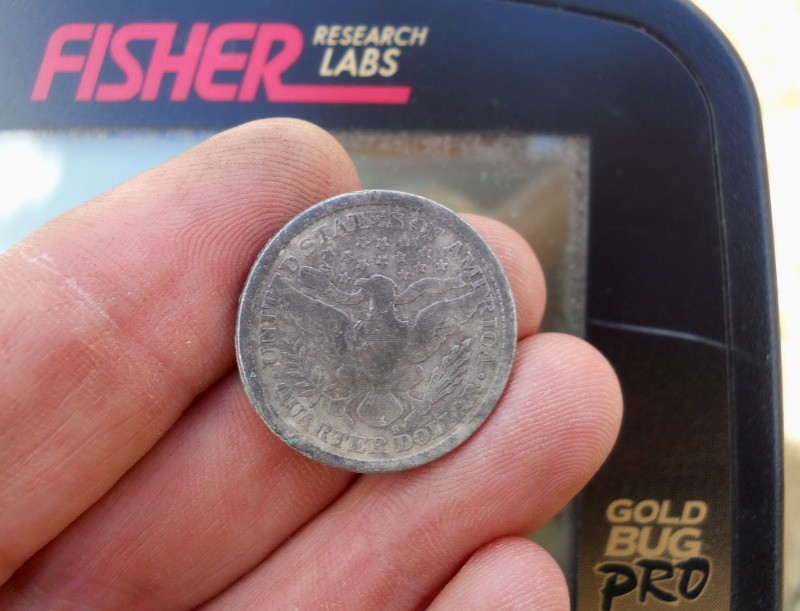Search the Community
Showing results for tags 'fisher gold bug'.
-
With the official announcement on May 15 of the (hopefully) mid-summer release of the Garrett Apex there was considerable discussion of the (only) stock coil planned for release and its affects on depth. Within that discussion Chase gave me incentive to do some testing. This post is a result of that, but since I think my testing is applicable to more than just the Garrett Apex I'm creating this post in the general DetectorProspector forum. The gist of the topic there was how much compromise the 6" (wide) X 11" (tall/high - my choice of word) Apex stock would have on depth. As I mentioned I have quite a few coils for each of my detectors, but subsequently I realized there was one detector (Fisher Gold Bug Pro) and coil combinations (5" DD round and 5" X 10" DD elliptical) which would best address this issue. (I also have some other options -- White's TDI SPP and Minelab X-Terra 705 -- but those are a bit less ideal as will be discussed later. Since I have two other coils for the GB Pro I decided to include those for completeness although they add more variables/concerns and thus don't fit quite as neatly as the other two. I initally started with my variable depth test stand which allows me to vary the depth of small targets in 1/2 inch increments from ~ 1" down to 12" depth in the ground. However, in the midst of that part of the study I realized that I have some (likely iron) trash targets in the field-of-view which compromise the tones/measurements. Fortunately I also have two cleanly placed buried coins -- a copper alloy Lincoln Memorial USA penny buried at 5" depth and a Jefferson nickel alloy 5 cent piece at 6 inch depth. Neither of these currently suffers from nearby trash targets. I subsequently altered my study to use those targets for the coil performance tests. Unfortunately these also aren't ideal since under the conditions of testing they are too shallow to determine in-ground depth limits. What I did as a hybrid compromise is to carefully (i.e. measurably, with shims) raise the coil above the ground until the signal disappeared. For a second (more/less confirmation) test, and one that should be easily repeatable by anyone with the same/similar detector and coils, was to then perform a standard air test. Let's start with the conditions of the tests: 1) Ground conditions -- moist ground (we've had a typical wet Spring season), Fe3O4 mineralization measure of 2.5 bars on both the Fisher Gold Bug and Fisher F75 (2.5 meaning that about half the time I see 2 bars and half the time 3 bars). 2) Gold Bug Pro running in "all metal" ("motion all metal" in USA terminology which I like to call minimally filtered), max gain, threshold at 11 (which is about where Kevin Hoagland calls "mosquito buzzing in your ear"), no headphones (so detector's speaker). 3) My precision for "depth" is 1/2 inch. That coincidentally was the height of the shims I used in the hybrid test and also my ability to control the hand-held coin distance in the air test. 4) My determination of (maximum) depth limit was simple. I increased the depth until I thought I could barely detect an audio signal. I then decreased the target-->detector distance by 1/2 inch and required that I subsequently heard a clear signal. If not I reduced the depth/distance and repeated. Here are the raw data results. I'll explain the meaning of the columns shortly. You can see the four coils I tested. The first three are all Fisher manufactured and the last is the NEL Tornado. Rather than to use the nominal product quoted dimensions ('dim' short for 'dimension' in the column headings) I actually measured the coils and interpolated to account for the fact that a coil doesn't typically have a single extent but rather is a bundle, and further that the bundle obviously fits inside the housing. For the closed coils this is obviously more vague but in those cases I just used half an inch less than the housing dimension. An addition oddity is that DD coils aren't really simple ellipses but some overlap of two independent elliptical coils. 'geom mu' is the geometric mean of the two just determined transverse dimensions -- more specifically the square root of their product. Hopefully you'll see later why I calculated that quantity. It's not really relevant for the main conclusions I draw. The last two columns are the actual distances between the target and coil for the limiting distance (see item 4 above). In the case of the air test that is obvious. In the 'part ground' test that is the sum of the depth of the coin in the ground and the height of the coil above the ground for both coins. At this point I think it's worth discussing some caveats/assumptions/limitations of this test. Then if you've stayed with me I'll go a bit farther and hypothesize on how to use these data to draw conclusions for other coils. 1) Although I chose a detector/coils combination that was as consistent as I could be (same manufacturer and same 'width' coil), it has been discussed on this forum previously (sorry, no link) that the quality control of coil manufacture is a difficult task. It's certainly possible, although not necessarily likely, that my 5" x 10" elliptical coil is a high end tail performer among its peers and/or my 5" round is a low end performer. 2) With any measurement, there are in particular systematic errors and biases. I can't "double blind" my method. That is, I do know which coil I'm testing at a given time and if I have a prejudice for or against a certain coil that could show up in the results. Also, statistical uncertainties (more succinctly, how repeatable are my data) can contribute to errors. It is worth pointing out that swinging the heavy NEL 15" coil effectivly makes taking in-ground measurements with it difficult. As a result I was unable to confidently get a max depth reading for the penny using that coil, which is why that cell is blank. No problem with air tests because there, as is standard (?) I mounted the detector in a stationary horizontal position and just 'swung' the targets to determine the (max) limit distances. Again, it's really the 5" round DD and 5" x 10" elliptical DD that are most relevant. The others are include for information purposes but also to add to the plots I show later. As you can see, in these tests there is a clear and significant advantage for the 5" x 10" elliptical over the 5" round in both the hybrid test and in the air test. OK, I now go a bit deeper. Is there a mathematical relationship which can predict coil depth performance if I know the coil dimensions? Compared to above this is another leap into the unknown with additional uncertainties. However, here are a couple plots which seem to indicate relationships between the potential maximum detectable depth and the geometric mean of the coils width and height dimensions. (Sorry for the confusion but the Blue dots in both plots are for the 1 cent piece and the red dots are for the 5 cent piece.) It's better to look first at the 2nd plot -- air test. There appears to be nearly linear relationship between max depth and the geometric mean of the coil's dimensions, although it appears to trail off with the large (NEL) coil. Superimpose upon that the effects of ground noise and you see a further deterioration both in absolute depth and also in the trend which is shown in the first plot. Simply put, it is well known that mineralized ground, even moderately mineralized as in my back yard, negatively affects attainable depth. The larger the coil, the more ground it "sees", and thus the more ground interferes with performance. I'll finish by pointing out that this isn't the first study I've made. Back 3 years ago when DetectorProspector member Karelian made detailed measurements of a large collection of mono coils on a White's TDI in both ground and air, I noticed the depth vs. geometric mean relationship. However, without a theoretical (physics/engineering) reason to expect this relationship, at this point it's merely a convenient correlation. Karelian's data are further muddied by the fact that the coils studied have many manufacturers: Coiltek, White's, Miner John, Nugget Finder, Minelab,... I could show those results but I think I'll await the reactions to the above. I can also do more tests (e.g. with the X-Terra although there is not clean comparison of round vs. eliptical coils with the same width, at least in my collection) or repeat these. I await your posted reactions (including yawns 😁).
-
I as just alerted by a forum member that Cabelas is advertising the Fisher Gold Bug 2 for $574, a new low price. I do not know if this is a clearance sale, or a permanent price reduction, or if it is offered at other dealers. I'm sure we will sort that out real fast! They also have the basic Gold Bug on sale for $375. Do not confuse this with the Gold Bug Pro. The Pro has both ground grab and manual ground balance, the basic Bug has ground grab only. Otherwise however they are the same detector. https://www.cabelas.com/catalog/browse/_/N-1104188?CQ_view=list&CQ_ztype=GNU&CQ_ref=~type-Gold%2BDetectors This may be temporary but it also in my opinion is overdue as a permanent move on the basic Gold Bug at least. That model really should just be discontinued in favor of the nearly identical Gold Bug Pro, but if not it sure needed to come down in price. It adds to the confusion out there and some people buy it thinking they are getting the Pro. Just clear it out and discontinue it. Gold Bug 2 is a tougher story. It is in a class of it's own as an old analog model that with 6" concentric still may best the best tiny gold getter on the market. Newer machines at lower prices may very well equal it though, or close enough for most people. The main problem with the Bug 2 is it is expensive to manufacture so I am not sure a permanent price reduction would be sustainable. Fisher has discontinued several models in the last couple years and may be consolidating or revamping their lineup around the introduction of a new website. Lond story short this may be just a temporary sale or a sign of bigger things... we will see.
-
I as just alerted by a forum member that Cabelas is advertising the Fisher Gold Bug 2 for $574, a new low price. I do not know if this is a clearance sale, or a permanent price reduction, or if it is offered at other dealers. I'm sure we will sort that out real fast! They also have the basic Gold Bug on sale for $375. Do not confuse this with the Gold Bug Pro. The Pro has both ground grab and manual ground balance, the basic Bug has ground grab only. Otherwise however they are the same detector. https://www.cabelas.com/catalog/browse/_/N-1104188?CQ_view=list&CQ_ztype=GNU&CQ_ref=~type-Gold%2BDetectors
-
There are three versions of the First Texas 19 kHz circuit for sale at many retailers. One is based on the original Gold Bug Pro model, sold with various coil options, and includes the now discontinued Teknetics G2. There is also a basic Gold Bug version with no manual ground balance, the bottom dollar variant. The third version is a later design that added features to the Gold Bug Pro, the result being the Fisher F19. This is now also being sold with various coil options. The F19 is also available under the Teknetics label as the G2+, and now just released under the Bounty Hunter label as the Time Ranger Pro. To reiterate, the Gold Bug Pro and G2 versions are the same circuit board, the only difference between the models are coil and rod options plus cosmetic differences. The same goes for the F19, F19 Ltd, G2+, and new Time Ranger Pro. The same circuit board with different coil and rod options. It is interesting then that the Gold Bug DP, the Gold Bug Pro with 7" x 11" coil sells for $200 more than the more capable Time Ranger Pro. "How can this be," you wonder? The power of name brand and a name, plain and simple. Fisher has a name equated with more expensive detectors, and the Gold Bug name carries it's own cachet. The Bounty Hunter name is usually for lower price models. Welcome to Marketing 101. Based on comparative capability I’d say the Gold Bug Pro is more like a $349 detector these days, so it’s fetching quite a premium. Guide To Gold Bug Versions Gold Bug Pro / G2 versus F19 / G2+ click or double click for larger versions.... Fisher Gold Bug DP and Bounty Hunter Time Ranger Pro Gold Bug Pro and Time Ranger Pro features comparison Gold Bug Pro and Time Ranger Pro controls
-

Detector Magnetic Mineralization Measurements
GB_Amateur posted a topic in Detector Prospector Forum
Occasionally in posts I see reference to mineralization and how it affects detector performance. It is often vague with usage of words like 'mild, moderate, severe'. In fact several detectors have the capability of measuring it. Two of mine -- Fisher Gold Bug Pro and Fisher F75 -- have that capability. Until now I've typically paid little attention to it. (Magnetite) mineralization and its effects are clearly important in many detecting for native gold situations, but it's also meaningful for other forms of detecting, if nothing else when comparing notes on detector performance. Extreme cases we've seen are Tom Dankowski's reports on the depth he gets in the sandy, non-mineralized soils of Florida vs. Steve Herschbach's difficult Reno parks. An even more extreme example has been reported multiple times by Mark Gillispie in coal ash laden school yards. Here are the pertinent sections from the F75 and F19 (Gold Bug family member) user manuals respectively regarding the meanings of their magetite measurements: Personally I prefer the F75 readout since it quantifies the meaning of the bar levels. Not sure why the Gold Bug scale wasn't equivalently defined, maybe another example of "don't step on the toes of the more expensive model" syndrome.... Yesterday I made measurements in my back yard with both detectors, two coils each (stock Fisher 5" round DD and 7"x11" DD). In all cases I ground balanced before taking the measurements. For the F75 the ground phase values in my backyard as a whole were 61 with its 5" coil and 64 with the 7"x11" coil. In those locations (still F75) the 5" showed 2 bars and the 7"x11" was about 50-50 divided by 2 bars and 3 bars. The measurements made with the Gold Bug were nearly identical in terms of the bars shown (2 with 5" and 2-->3 with 7"x11") for ground phases of ~64.5 and ~60 respectively) even though the scales on the two detectors don't really align in terms of the units of measure. Now here's a possibly interesting and serendipitous observation: for my teststand the readings were 3 bars in three of the four cases (I missed the measurement with the GB Pro and 7"x11" coil). If you refer back to the linked thread there is a drawing which shows a concrete layer at 15" depth. This was made with a store bought bag of concrete mix. Those contain not only the cement but also sand and gravel filler. Where did that sand and gravel come from? I don't know but it sure appears that it came from a site more mineralized than my back yard! I vaguely recall previous measurements I've made (but failed to record -- my bad) in my back yard where the F75 read 4 bars. One thing I wonder about is how much soil moisture affects the measruement. (We haven't had rain for a couple weeks so the ground is considerably drier than typical for the late autumn, winter, early spring months here when I likely took those earlier measurements.) But there are other variables so I wouldn't conclude that moisture does have an effect. One would hope not, but certainly dectectors are known to perform differently when detecting in various soil moisture conditions which is why I wonder. As always I'd be interested in seeing other measurements (regardless of detector model) and comments. -

G2 Gold Bug Pro 15v Mod
Rivers rat posted a topic in First Texas - Bounty Hunter, Fisher & Teknetics
Hello i was wondering if some of you have read anything about this mod . I heard about it twice From France both were the Voltages has been cranked up and maybe some internal mod. The G2/GBP work well on sand not deep but it work,modded it apparently become better on beaches littered with Iron... RR -
hello, my friend send me this photo, of his fisher gold bug 2. i think he got scammed, but seller refound him. he said that the metal detector work but the switches and ground balance knob don't do anything, so he open the control box and they aren't soldered on the motherboard ( see the red circles in the photo) someone have a picture of the fisher gold bug 2 pcb so we can understand where they had to be soldered, on internet i can't find any picture. i know that metal detector is a stupid chinese copy, but my friend have bought it, he don't know a lot about metal detecting and don't have a lot of money so i want to help him. So at least he can find someone when we go out, without dig iron if we solder the switch. thanks
-
So I managed to squeeze in another half day outing to my spot up in the mountains. More digging and moving boulders uncovered another 3 pieces of gold for 1.5g. The larger piece is 1g and is quite coarse / rough for this area. The black material is slowly being dissolved by hydrochloric acid. The first photo shows the creek. A little bit of water with a lot of boulders. Historically this creek has produced nuggets up to 12oz, I'm sure under one of the boulders there will be one for me. Will probably be a month before I get time for another look. I'm trying to finish building my house extension in my spare time and my two young daughters keep my busy....
- 3 replies
-
- new zealand
- gold found
-
(and 1 more)
Tagged with:
-
Here are two photos of gold found over the last two trips. This gold was found by removing the gravel in the steam bed and exposing the bedrock. The bedrock was then detected. On both trips several of my gold hunting friends came along. The bigger nugget was 5g and very tricky to recover. Lodged deeply in a crevice under white water. The other pieces total 1.3g. I hope to have time for one more outing before I have to go back to work. I'll keep you posted. Merry Christmas!
-
Howdy from Montana Newbie, I am in the market for a GB Pro. Going to Arizona and escape these brutal Montana winters for 4 months. Have a buddy down there who is a snow bird also. He explores abandoned mine shafts and old mining operations. Figured I might as well swing a detector while exploring the area. Amazon had a GB Pro 5" coil as "used with box damaged" for $470.00. I decided to pull the trigger and see what was in the box. The unit looked good...but...I could only find the single 1/4" headphone jack, need the 3.5mm jack for the headphones I am going to use. The manual stated this as well, only 1/4" jack. Didn't turn it on, just reboxed it and returned it immediately for full credit + $85.00 additional credit to buy a new unit with dual headphone jacks from Amazon at $549.00. Any thoughts? Thanks.
-
Had an outing with a good friend to a Local creek yesterday. We dug a huge hole and moved some big boulders and found the 1.3g right at the start of the process. Diligent detecting elsewhere in the creek produced the other two. The 1.7g was right at the start of a crevice that seems to run under a virgin bank... Might dig that out some time but there are some fridge size boulders in the way. Cheers for the fun day out buddy.
- 4 replies
-
- fisher gold bug
- gold found
-
(and 1 more)
Tagged with:
-
So today I thought it was about time I took my 2.5 year old daughter out to my gold claim. The claim is in reasonably rugged country with steep slopes and dense vegetation. Most of the gold is found as small nuggets on or near bedrock. There was one spot I could think of that was within 100m of the road where a river bank had been washed out and bedrock was exposed. That said I knew I'd have to cut a bit of a track through the vegetation to get the little girl through. We got to our location after a bit of a scramble down a short but steep slope with the aid of a rope. Was a bit of a performance with a backpack on my back and carrying my daughter. I set her up on a grassy bank next to where I'd be digging and surrounded her with snacks with which to entertain herself. As luck would have it I managed to uncover three small nuggets by clearing the gravels off the bedrock and detecting it. After about an hour she'd had enough and we clamberd back to my car. Needless to say, I'm very proud that she's now big and patient enough to take gold hunting! Oh, we got 0.8g total. However in this case the memories (at least for me) are priceless.
-
Hi Gals n Guys, First decent go with the Bug Pro fake today! Alot of trash. Bullet shell, lead, pot handle, square nails and plenty of tin. I ground balance to start with then from that point i keep an eye on it. Now, i run in all metal, gain at around 10-11 oclock, threshold only just buzzing. Mild steel trash can read around the 15-20 mark or around the 85-90 mark. I dig everything ATM to get a feel for it. If i was to detect gold, what would it read? With a really strong signal i switch over to discrimination to tey and ID. Have i got it right? Thanks guys. Al.
-
ColoradoGoldCamp Published on Feb 14, 2019. Rhodo nails the biggest nugget of the day with the Gold Bug 2 right on bedrock! What a great day out gold detecting! 54 pieces of trash and 3 count em 3! Colorado Gold Nuggets! Man, I love prospecting with my best metal detector! Did some arrowhead hunting too. We find some relics from the old gold mining days and some evidence of Colorado Arrowheads, all at Colorado Gold Camp.
-
-
-
-
-
HNY from the Gem State" Enjoy! ? Cheers to All! Ig
-
The Minimum Advertised price for the Fisher Gold Bug 2 has been US$764 for many years. I just noticed that at least a couple reputable websites are now advertising the Gold Bug 2 for $699. The Gold Bug 2 is getting a bit long in the tooth, having been in production since 1995, yet you can still argue that to this day no detector does a better job of getting the tiniest gold bits with its little 6" concentric coil. I am not sure if this is a temporary holiday price decrease, or just a response to all the new competition on the market. Still, I thought I would make a note of it for the Fisher Gold Bug 2 fans out there - you know who you are! Google search for "fisher gold bug 2" Fisher Gold Bug 2 metal detector
-
Hello to all I wanted to work on that project for a while,Fisher has always been synonym for me of Treasure discovery since I started the hobby 26 years ago,reading French magazine Tresor de l Histoire with pictures of Fisher detectors all over the place ...................O0000 boy how many hours I spend staring at the 1266xb.............I really like my F75DST et had a few Goldbug pro and G2 so I decided to start a bid of DIY .I am im Europe so parts aren't as available as on your side of the pond,i contacted couple of dealers and managed to get the parts for the handle,Arm cup is XP as it is 100 gr lighter than the fisher one,all carbon bits bought from Italy and Chian,the Clamp is from Sweden and designed for pole for window cleaning,coil will be an 13" Ultimate it is on her way from Bulgaria anyway here we go : Ladies and Gentlemen (DRUM ROLLS): the GOLDBUG PRO 2 lite:
-
On one of my posts, GM_Amateur asked about the newer version Fisher Gold Bug and Gold Bug-Pro. He wanted to know if they are Gold Detectors or Multi Purpose. I classify the Gold Bug and Gold Bug-Pro as true Multi Purpose detectors. I put the MXT series and F75 in the same category too. To me, it's a detector with medium kHz operating in the teens and having an adjustable Discriminator capable of rejecting ferrous and nonferrous targets if desired. When I tested the 1st prototypes of the Gold Bug I was very impressed with its sensitivity to small pickers (see photo). Then when the GB-Pro came out and I was able to get my hands on the larger coil, I was very happy with the performance. The GB & GB Pro were priced right at the time (less than many others), but performed well. I could take 1 detector on a trip in the mountains and use it for both gold and coin/relics. Your thoughts and input please?
-
Had to go over to Monterey the end of March to help my relations move some things back to Wyoming and since the weather was just great at the time on the way home i made time for a day trip to do some detecting with the GB pro and managed a few small ones,all found detecting bedrock cracks and crevices.

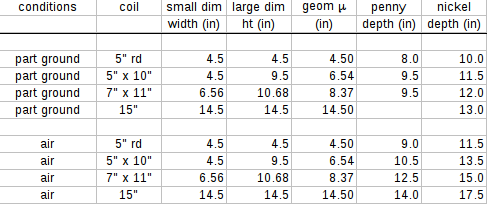
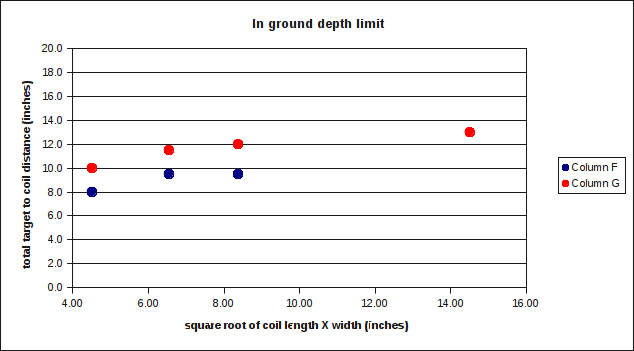
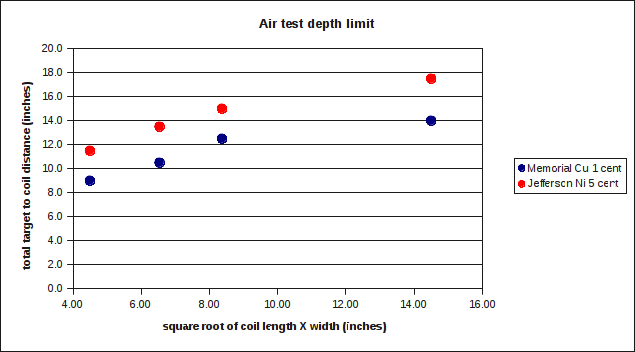

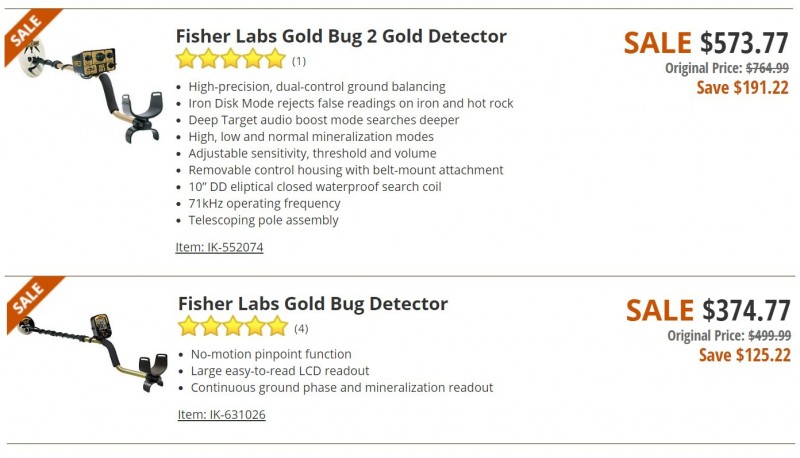
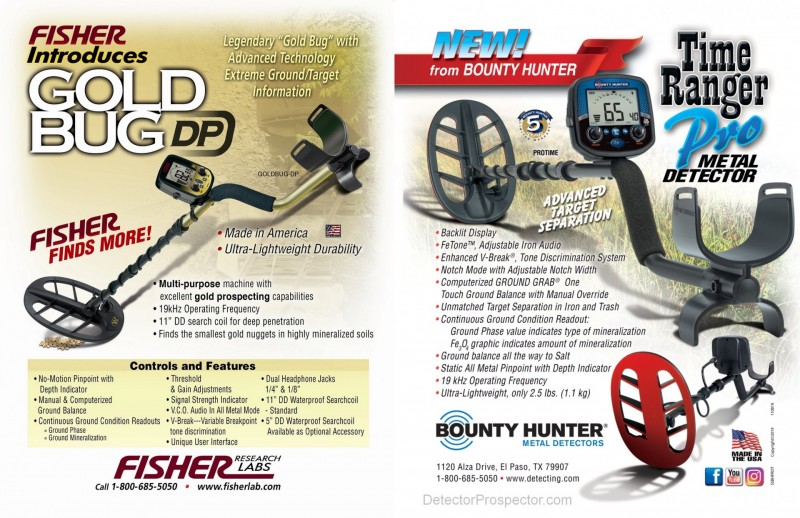
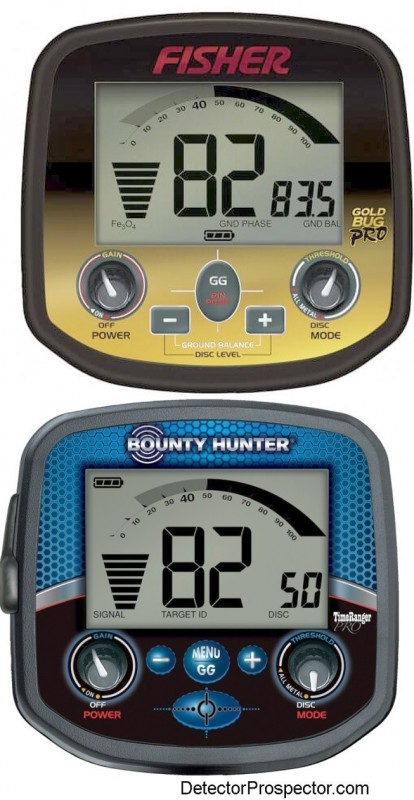
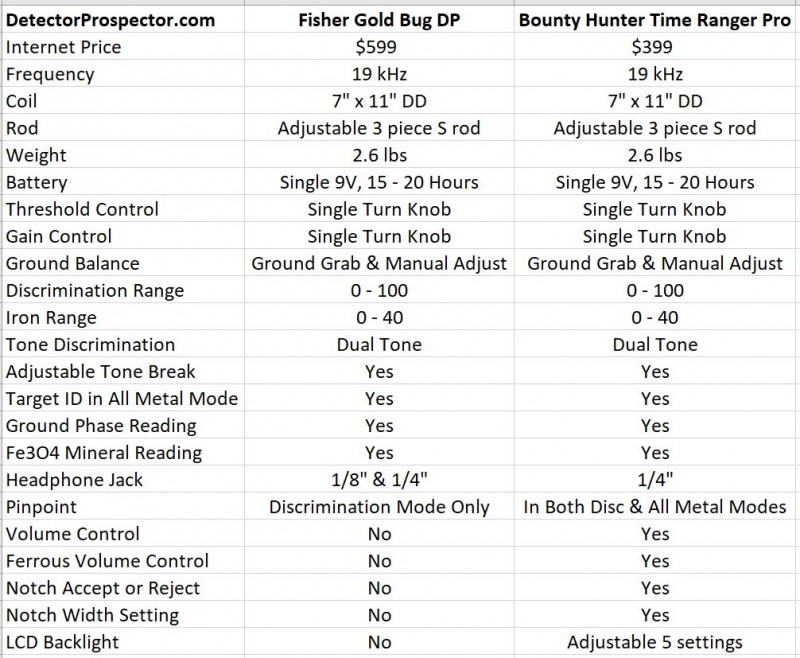
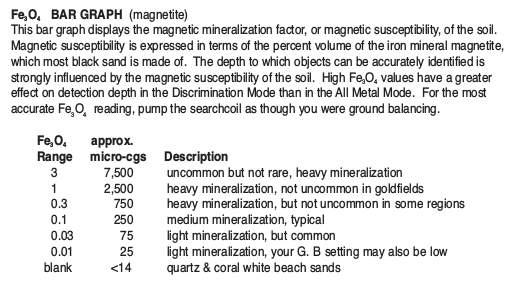
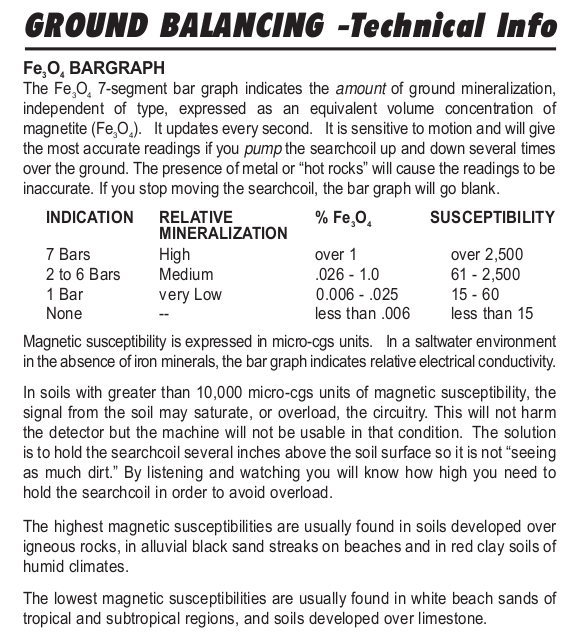
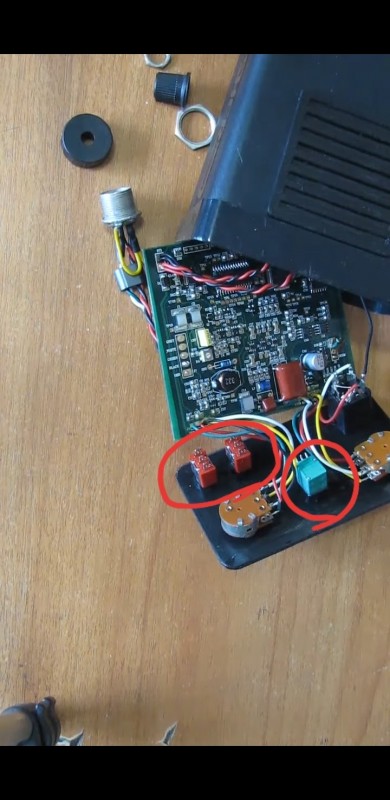
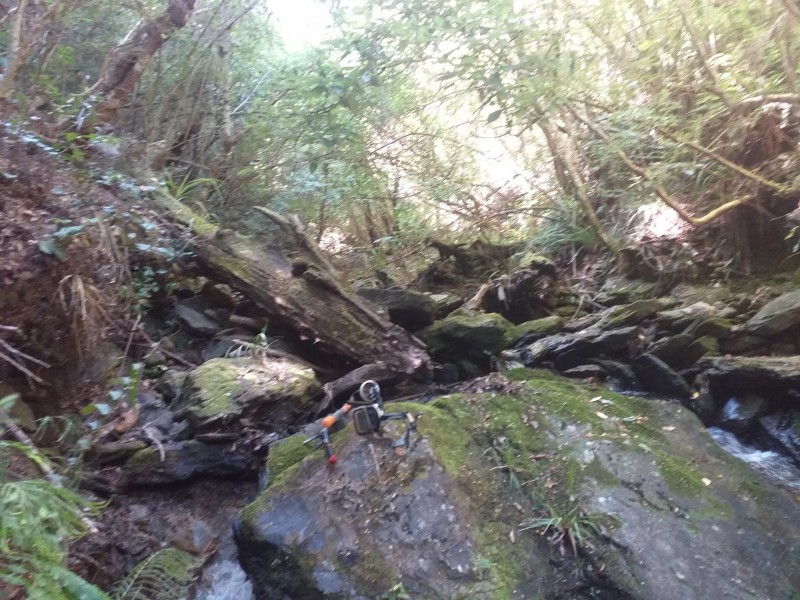
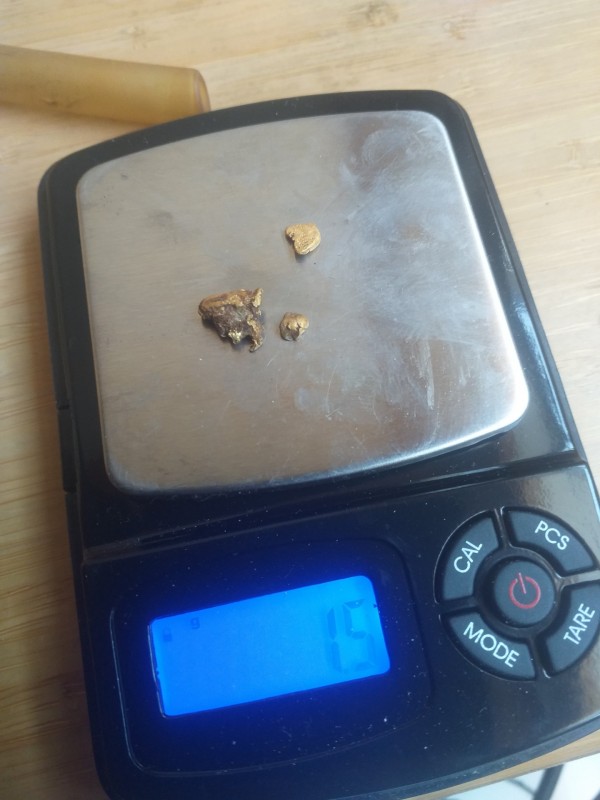
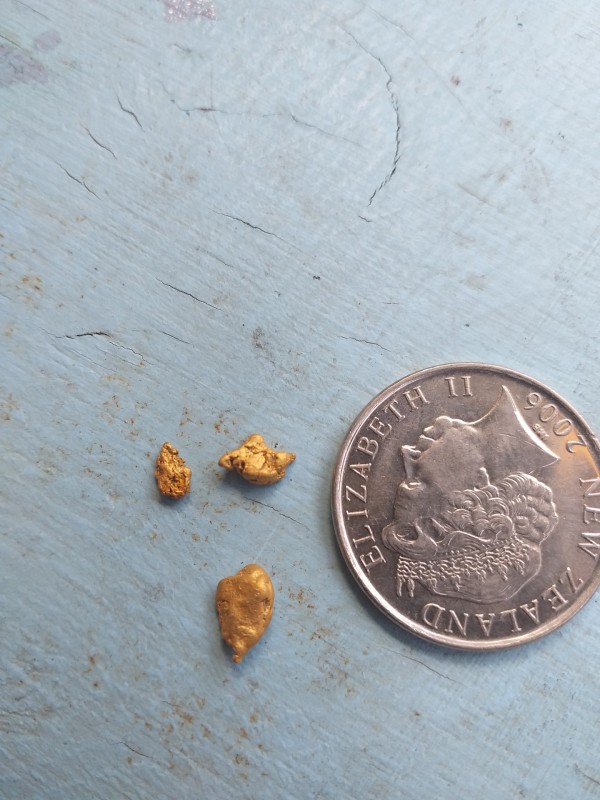
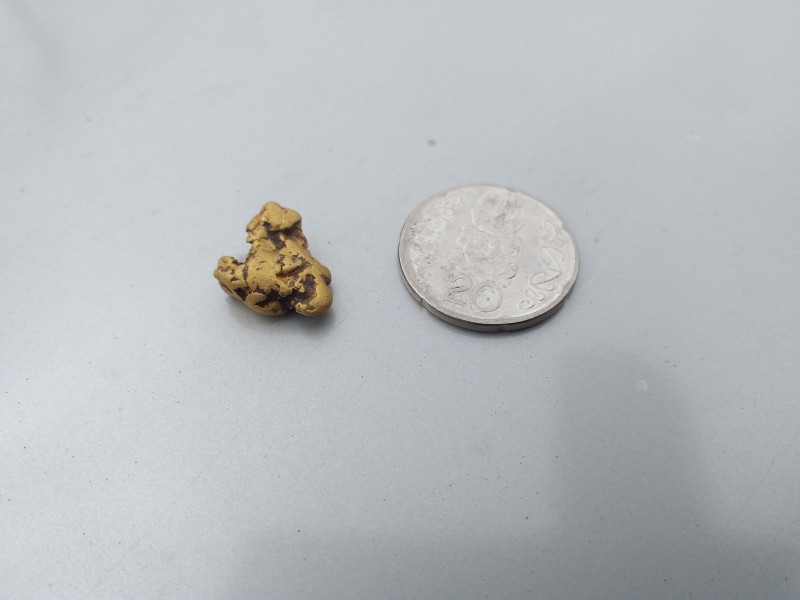
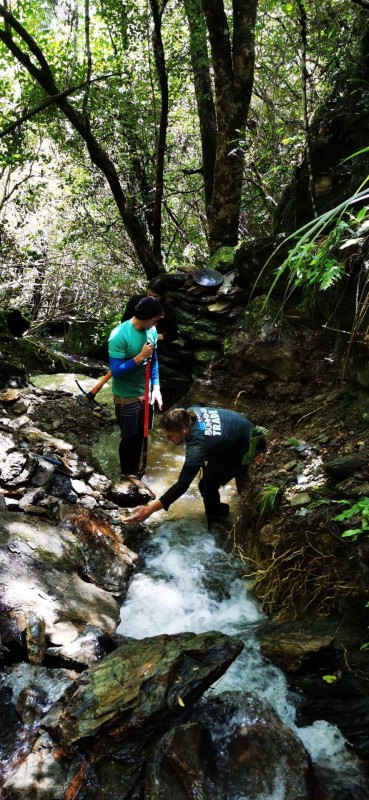
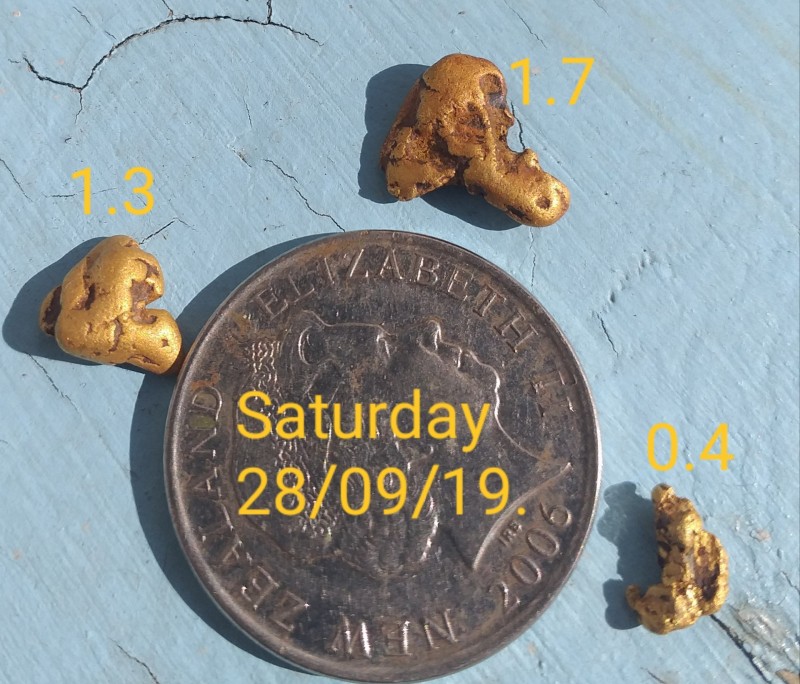

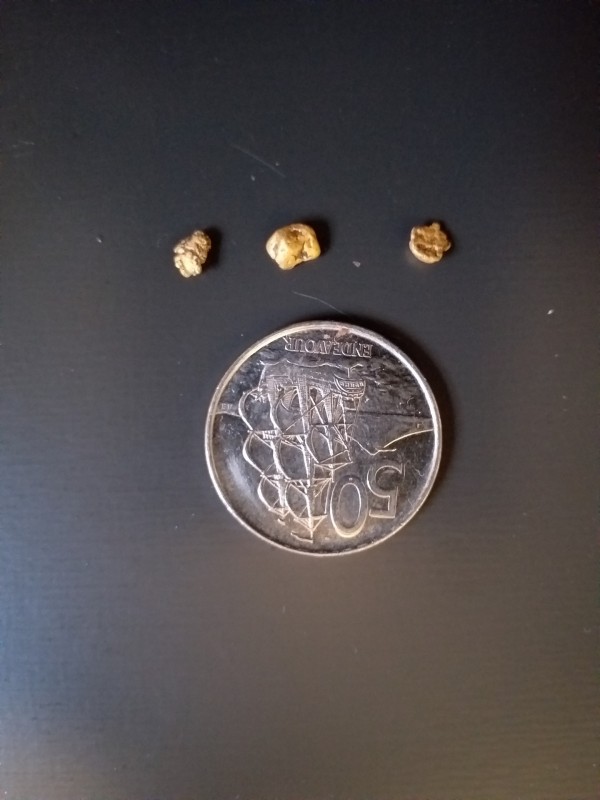

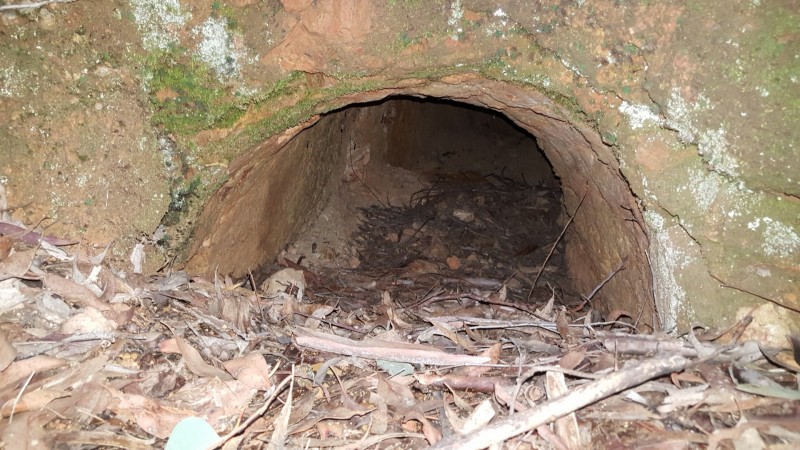
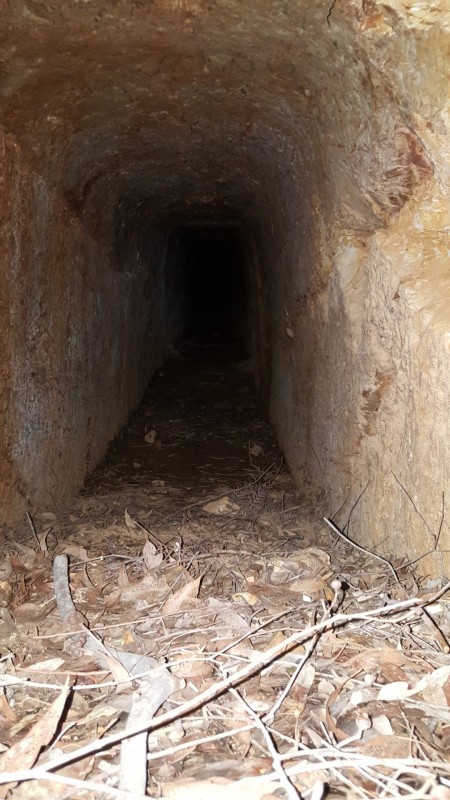
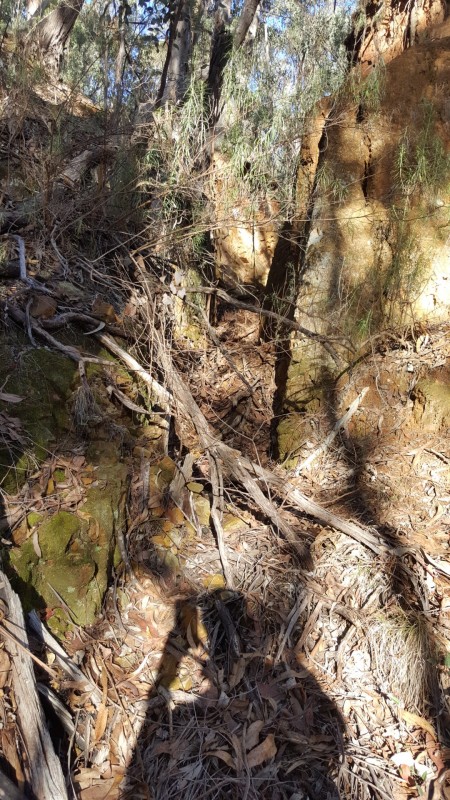
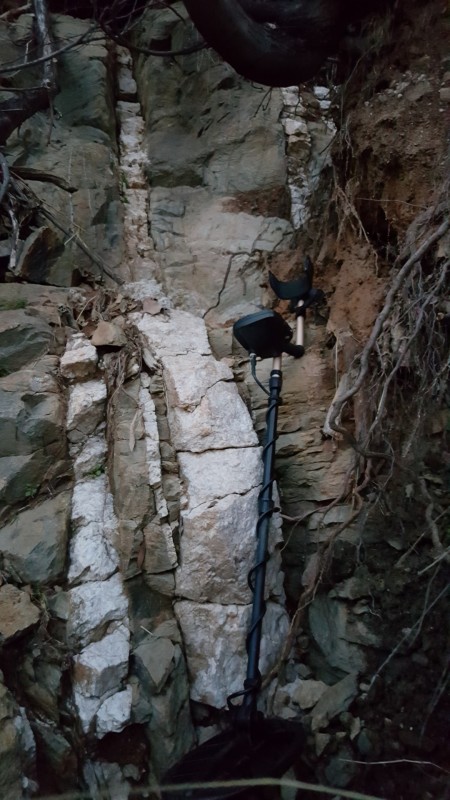
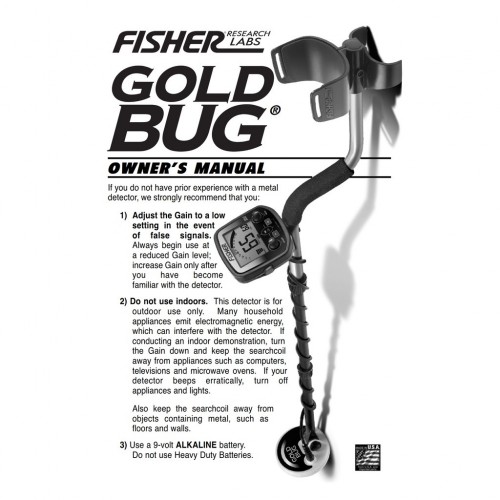
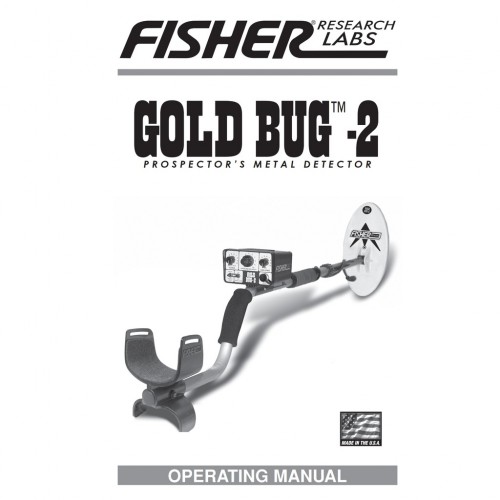
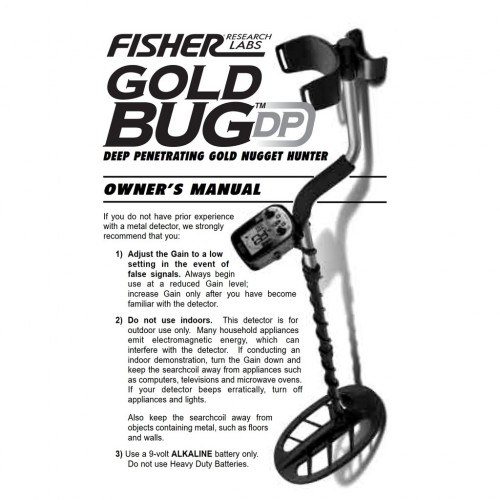
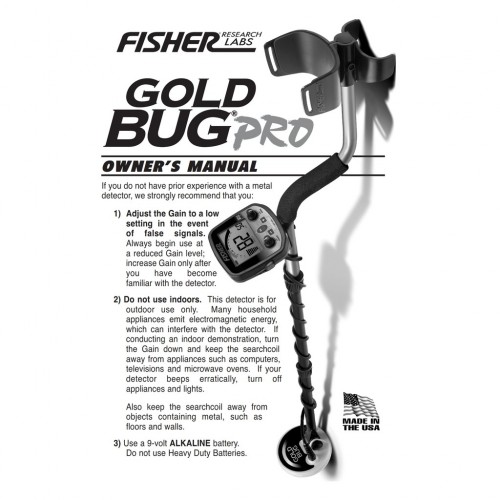
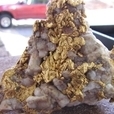

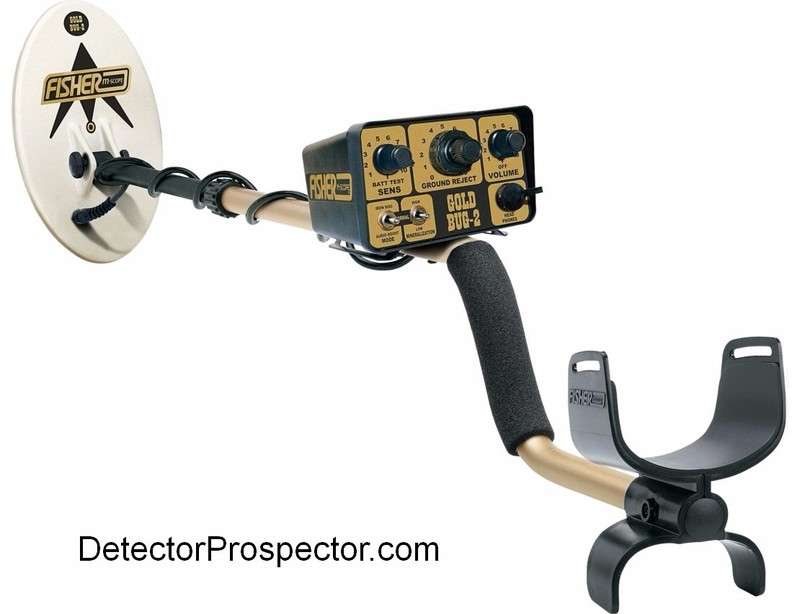
.thumb.jpg.66e438fde8fe443758f199eea17ccb83.jpg)
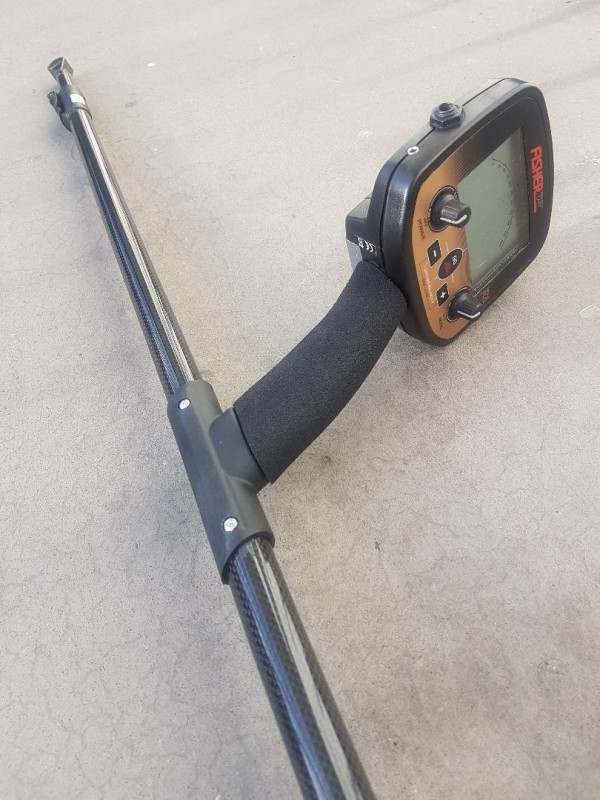
.thumb.jpg.357386bff00cab505c3f5a7abd5a0340.jpg)

